The intuition behind tree-based methods
Supervised Learning in R: Regression

Nina Zumel and John Mount
Win-Vector, LLC
Example: Predict animal intelligence from Gestation Time and Litter Size
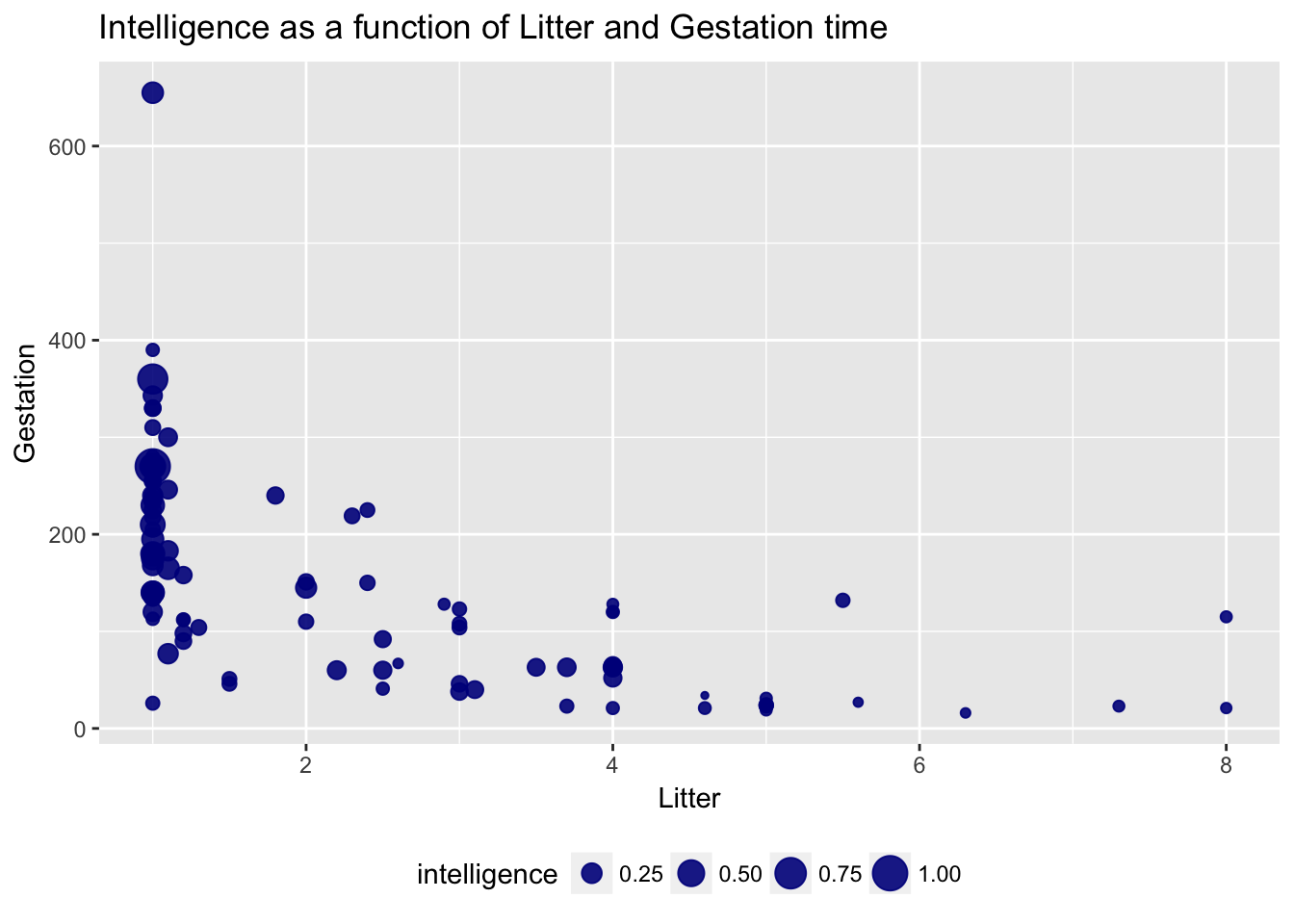
Decision Trees
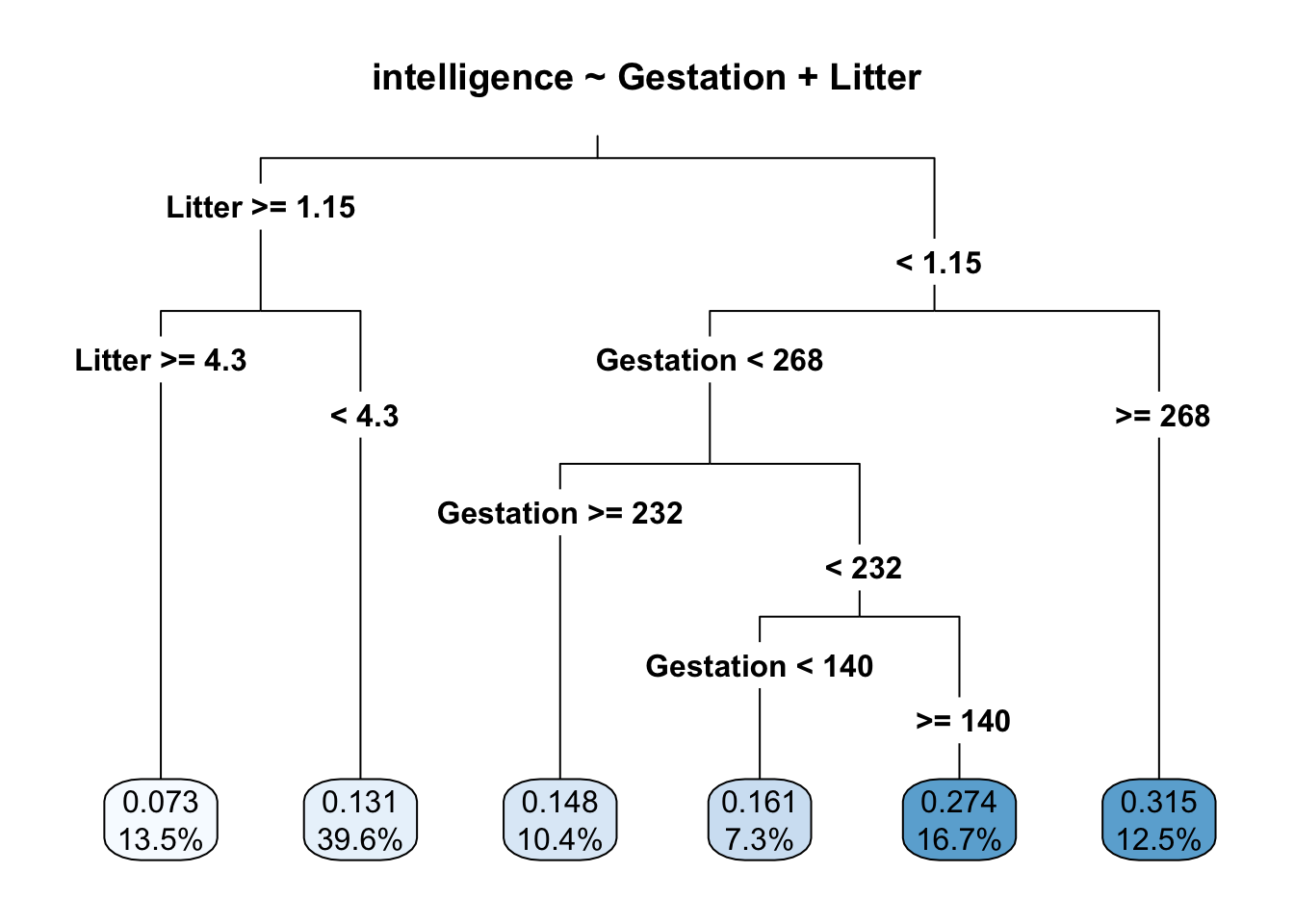
Rules of the form:
- if a AND b AND c THEN y
Non-linear concepts
- intervals
- non-monotonic relationships
non-additive interactions
- AND: similar to multiplication
Decision Trees

- IF Litter < 1.15 AND Gestation $\ge$ 268 $\rightarrow$ intelligence = 0.315
- IF Litter IN [1.15, 4.3) $\rightarrow$ intelligence = 0.131
Decision Trees
Pro: Trees Have an Expressive Concept Space
| Model | RMSE |
|---|---|
| linear | 0.1200419 |
| tree | 0.1072732 |
Decision Trees
Con: Coarse-Grained Predictions
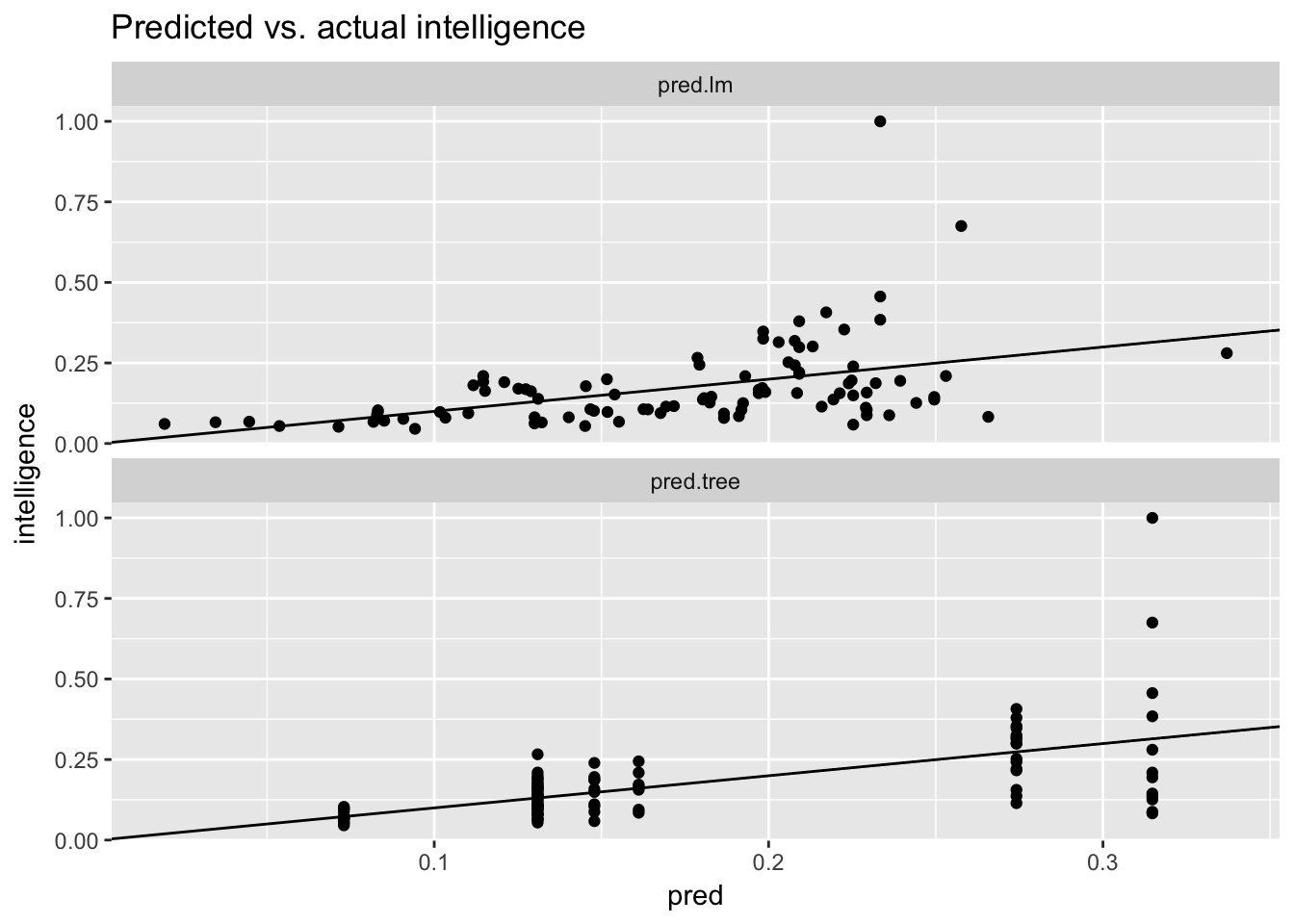
It's Hard for Trees to Express Linear Relationships
Trees Predict Axis-Aligned Regions
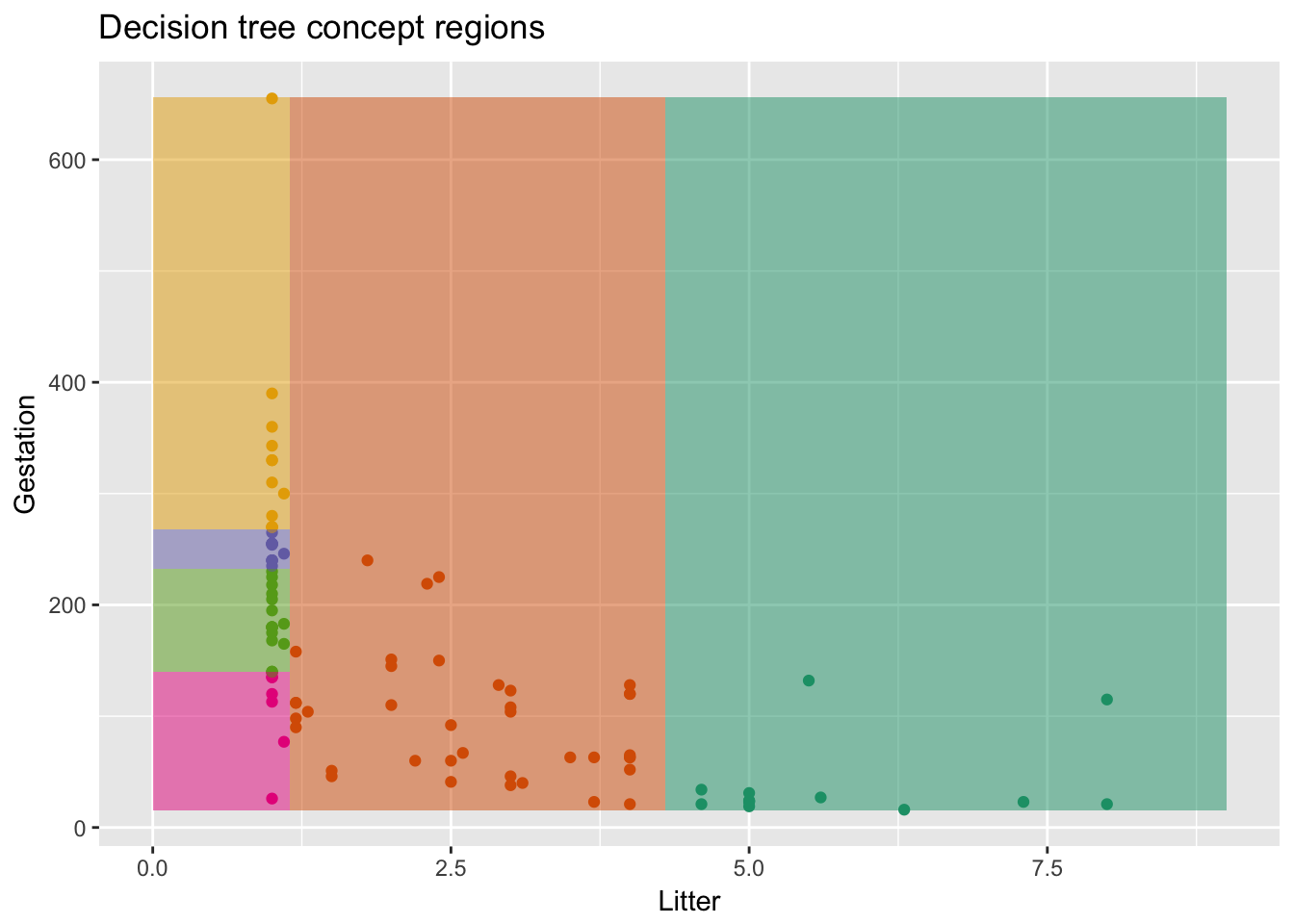
Each color is a different predicted value
It's Hard for Trees to Express Linear Relationships
It's Hard to Express Lines with Steps
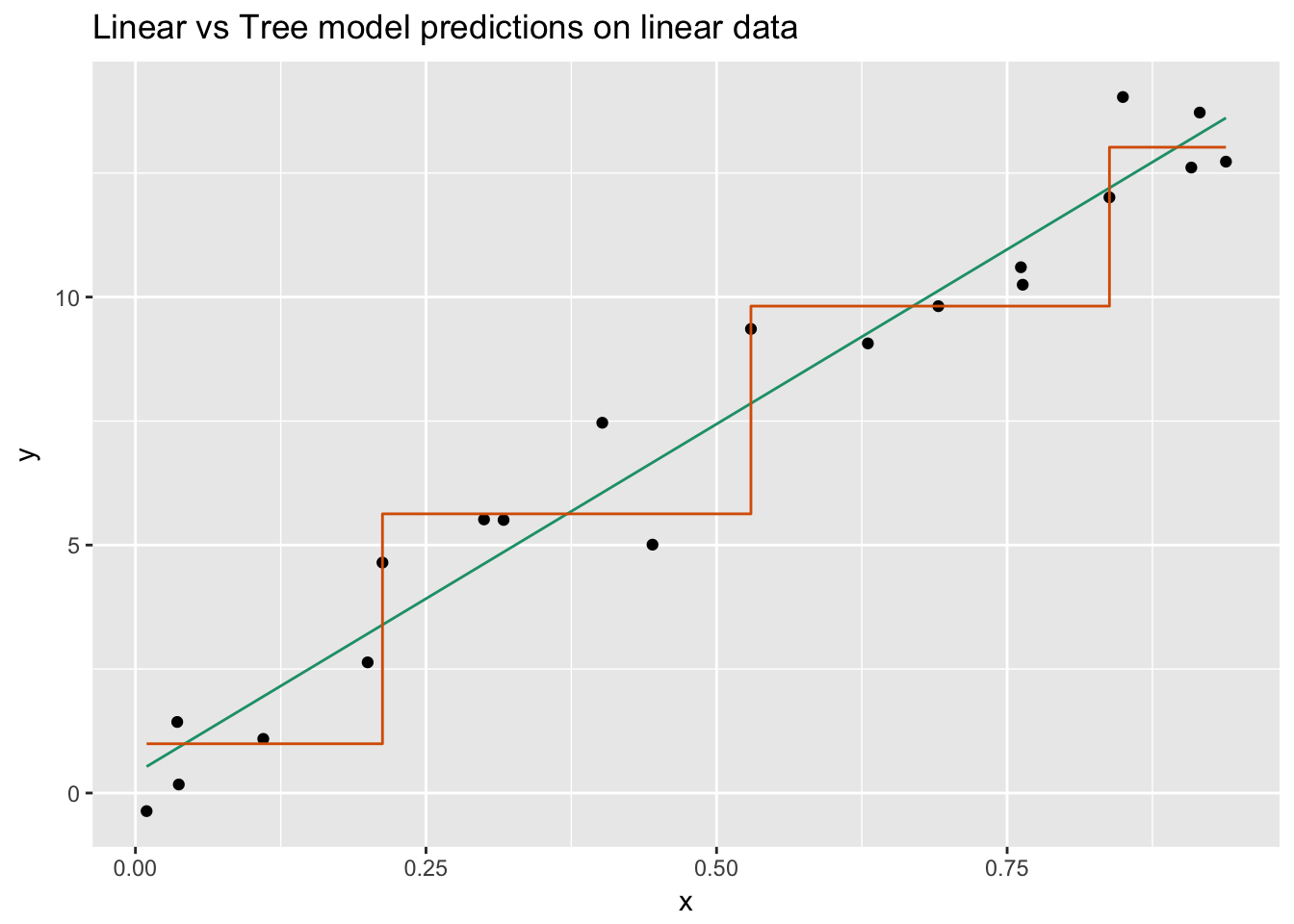
Other Issues with Trees
- Tree with too many splits (deep tree):
- Too complex - danger of overfit
- Tree with too few splits (shallow tree):
- Predictions too coarse-grained
Ensembles of Trees
Ensembles Give Finer-grained Predictions than Single Trees
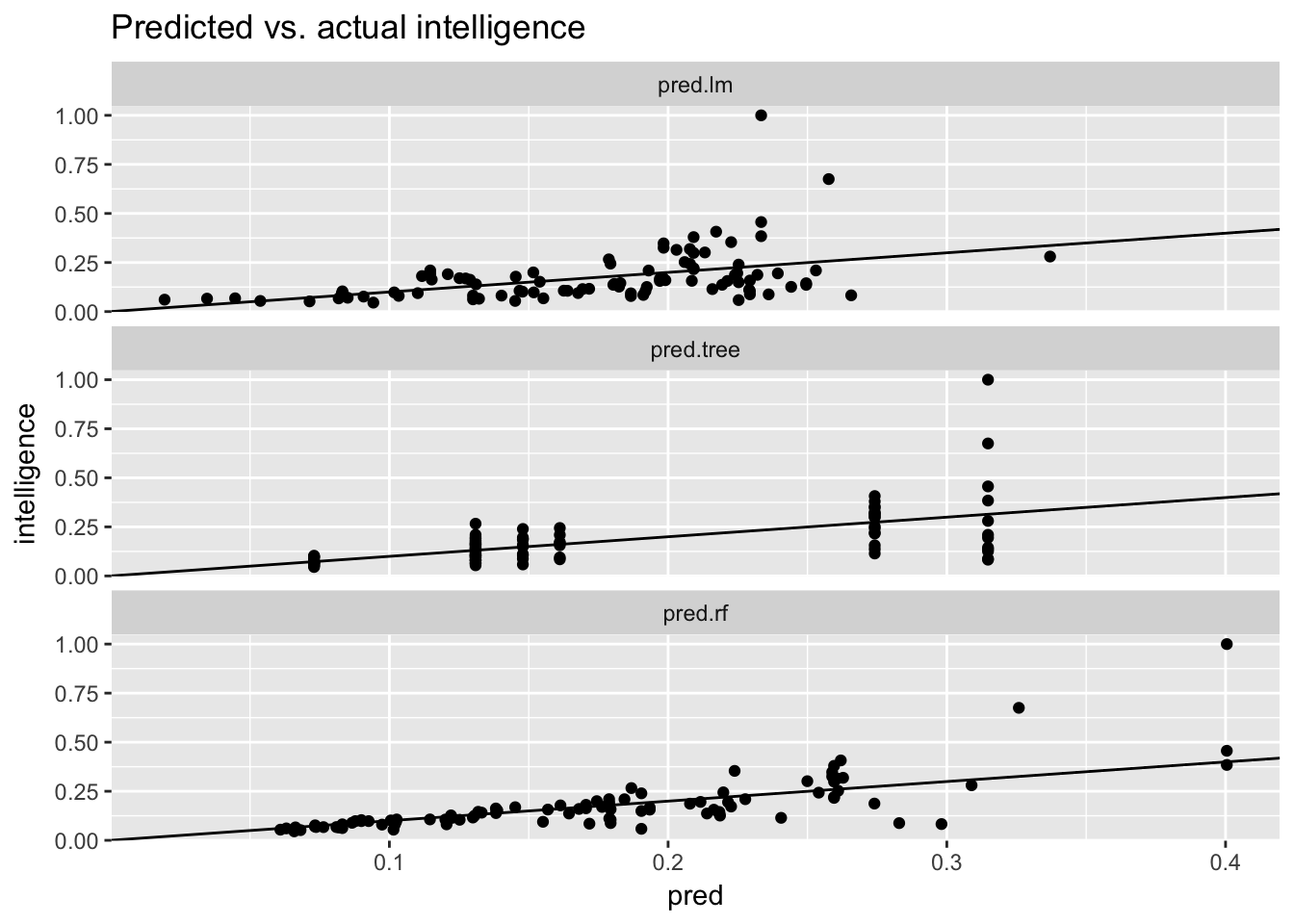
Ensembles of Trees
Ensemble Model Fits Animal Intelligence Data Better than Single Tree
| Model | RMSE |
|---|---|
| linear | 0.1200419 |
| tree | 0.1072732 |
| random forest | 0.0901681 |
Let's practice!
Supervised Learning in R: Regression

